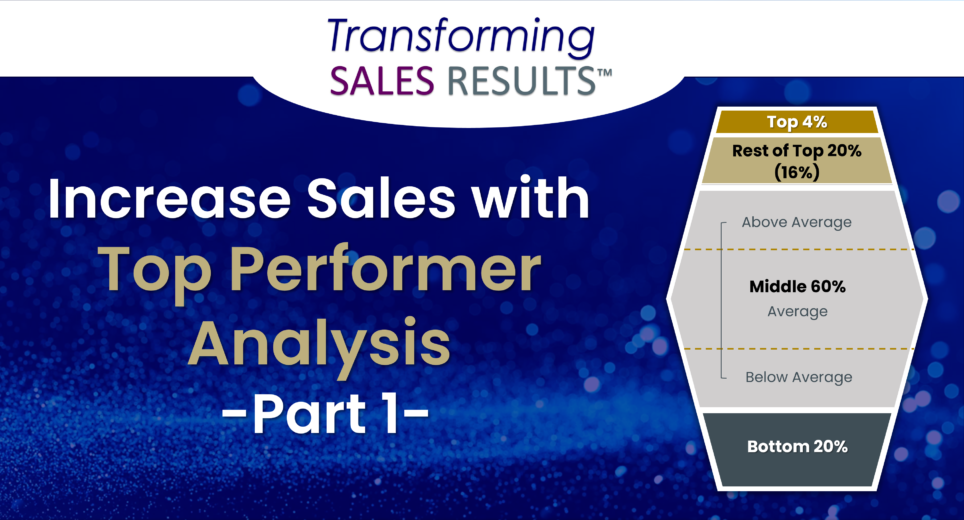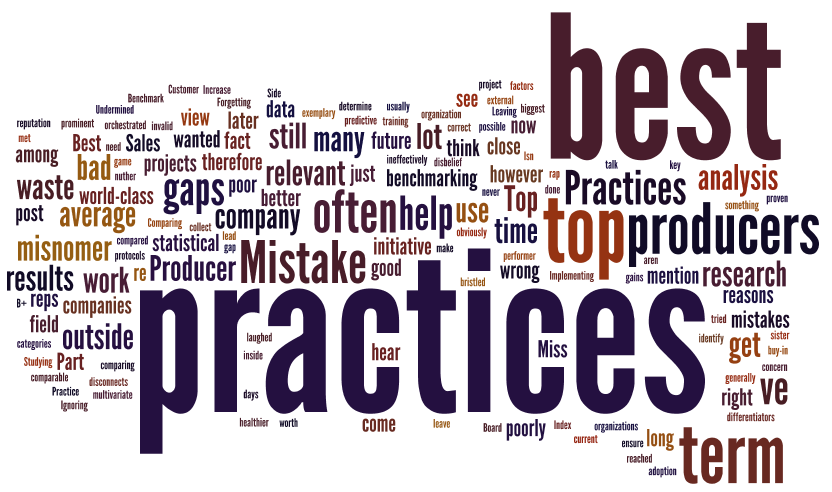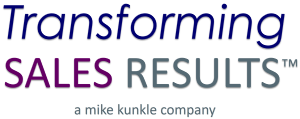How to Increase Sales with Top Performer Analysis – Part 1

 The term “best practice” is tossed around a lot. These days, it’s sometimes met with a groan or disbelief. There are many reasons for that, some valid, some not… but two of the most prominent reasons seem to be:
The term “best practice” is tossed around a lot. These days, it’s sometimes met with a groan or disbelief. There are many reasons for that, some valid, some not… but two of the most prominent reasons seem to be:
- The reaction to the misnomer inherent in the phrase “best practices.”
- The fact that it’s been done so poorly by so many for so long, and therefore produced such poor results so often, that it’s finally reached unpopularity with many.
Tastes Great! No, Less Filling!
At one company where I did this work, field reps and managers loved the term, wanted to know what the best among them were doing, actually wanted to share with each other, and encouraged me to use the term “best practices” – despite my hesitancy – to encourage field adoption and engagement with the project. When discussed with the CEO and COO, however, they had a very different view. So did the Board, some of whom bristled at the term and said it was a waste of time.
So… a waste of time? Really? (I often laughed at lot at work, as an internal practitioner in corporate America. I found it healthier than the alternatives.)
The fact that good ideas are often poorly executed without results and can later lead to poor organizational decision-making is another topic for a future post. For now, let’s talk about the misnomer and bad practices surrounding best practices.
Miss Nomer is Miss Understood’s Sister
I hear these responses a lot now, when I mention best practices.
- “Best practices aren’t really ‘best’… they’re just good practices.”
- “Who determines whether something is best or not? Isn’t that immediately invalid?”
- “I’ve never seen a best practices study amount to anything.”
- “I tried that at a previous company (or we tried it previously here) and it was a waste of time.”
Uh-huh.
But I do agree with the misnomer on the term “best.” Very often, the research or analysis protocols are not established appropriately to determine what the “best practices” are. While I do think it’s possible, if you collect the right data and use sound statistical analysis (things like predictive analytics and multivariate regression analysis, for the data geeks in the crowd), I’ve come to the conclusion that the research or initiative is usually better orchestrated as “Exemplary Performer Practices” (with a nod to Tom Gilbert), or for the more mainstream among us, simply “Top Performer Practices.” (Even better would be… “The Differentiating Top Performer Practices,” but it’s understandably difficult to get buy-in for that mouthy term.)
For those who are still with me… what terms would you use? I’d be curious to hear.
Speaking of Sisters…
Moving right along… here’s a side note, worth a special mention: A sister to best practices, benchmarking, has waxed and waned in popularity over the years. Comparing yourself to world-class organizations through benchmarking generally provides an external, “outside-in” view, and can clearly help you prioritize where to start, to make a difference in your organization.
What follows is grossly-oversimplified, but will provide a brief overview, if you’re not familiar. To benchmark, you compare your key metrics to world-class companies in your space (vertical industry), to see what gaps exist, and then calculate what gains could be achieved from closing those gaps.
HOW you close those gaps, however, is what matters most, after you identify and prioritize them. This is where best practices or “Top Performer Practices” come into play.
Using effective practices from the outside should be viable, if they’re from companies in your industry with comparable product/services sets, but should still be mixed with effective practices from the inside (as long as you have top performers present, with a marked, statistical gap between “top” and “average”).
- Incorporating the repeatable practices from your own current top performers can help you close the gaps between those producers and the rest of your team (or realistically, those in the average and above-average categories, or if you prefer, B+ through B- players). These practices are obviously very relevant to your company.
- Inserting the relevant best practices from the outside can help you ensure you are not just replicating the “best of the worst” internally. If you have true top performers on your team, this is less of a concern, but you still can help even your best producers improve their game, with relevant, proven practices from the outside.
How Bad Practice has Undermined Best Practice
Back to the bad rap. I think the biggest issue leading to the bad reputation is that best practices projects often fail to produce a tangible result. In the projects I’ve run over the past 25+ years, I’ve learned there are a few differentiating factors in making Top Performer Practices research work for you.
Here are the most common mistakes I see:
- Mistake 1: Studying the wrong “top reps” and therefore cloning the wrong behaviors
- Mistake 2: Ignoring the real differentiators, compared to average and low producers
- Mistake 3: Leaving the Voice of the Customer out of the equation
- Mistake 4: Forgetting to include what to “stop doing,” as well as start or continue
- Mistake 5: Implementing any resulting training ineffectively
In Part 2 of this series, I will address each of these mistakes and how to correct them, to get your “Top Performer Practices” initiative right, and increase sales results.
In the meantime, thanks for reading, be safe out there, and by all means… let’s continue to elevate our sales profession
Mike
Follow my work and connect
- SPARXiQ Blog: https://sparxiq.com/author/mikekunkle
- The Building Blocks of Sales Enablement Book: https://bit.ly/BBofSE
- Distribution Strategy Group Blog: https://distributionstrategy.com/author/mike-kunkle/
- Sales Effectiveness Straight Talk Webinars: https://bit.ly/MikeKunkle-OnDemand (60 Free Recorded Webinars)
- LinkedIn Articles: http://bit.ly/MK-LinkedInArticles
- LinkedIn Profile: https://www.linkedin.com/in/mikekunkle
- Twitter: https://twitter.com/mike_kunkle
About Mike
Mike Kunkle is a recognized expert on sales training, sales effectiveness, and sales enablement. He’s spent over 27 years helping companies drive dramatic revenue growth through best-in-class training strategies and proven-effective sales transformation systems – and he’s delivered impressive results for both employers and clients. Mike is the founder of Transforming Sales Results, LLC and works as the Vice President of Sales Effectiveness Services for SPARXiQ, where he designs sales training, delivers workshops, and helps clients improve sales results through a variety of sales effectiveness services. Mike collaborated with Doug Wyatt to develop SPARXiQ’s Modern Sales Foundations™ curriculum and also authored the SPARXiQ’s Sales Coaching Excellence™ course. His book, The Building Blocks of Sales Enablement, is available on Amazon.

